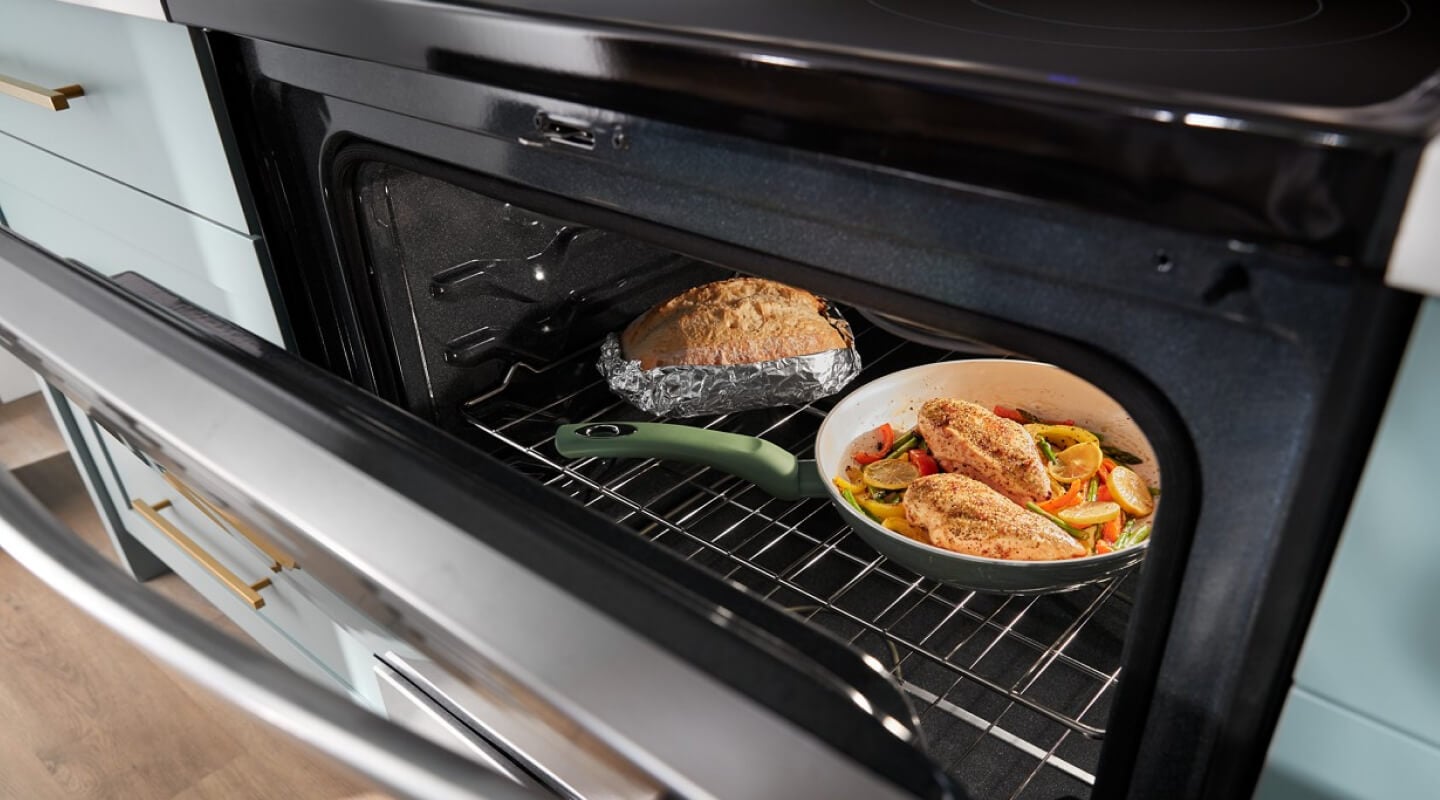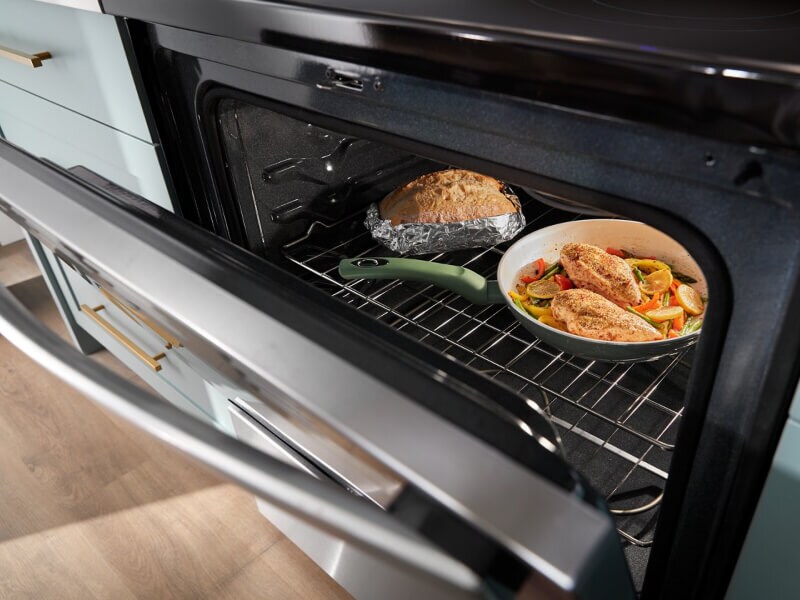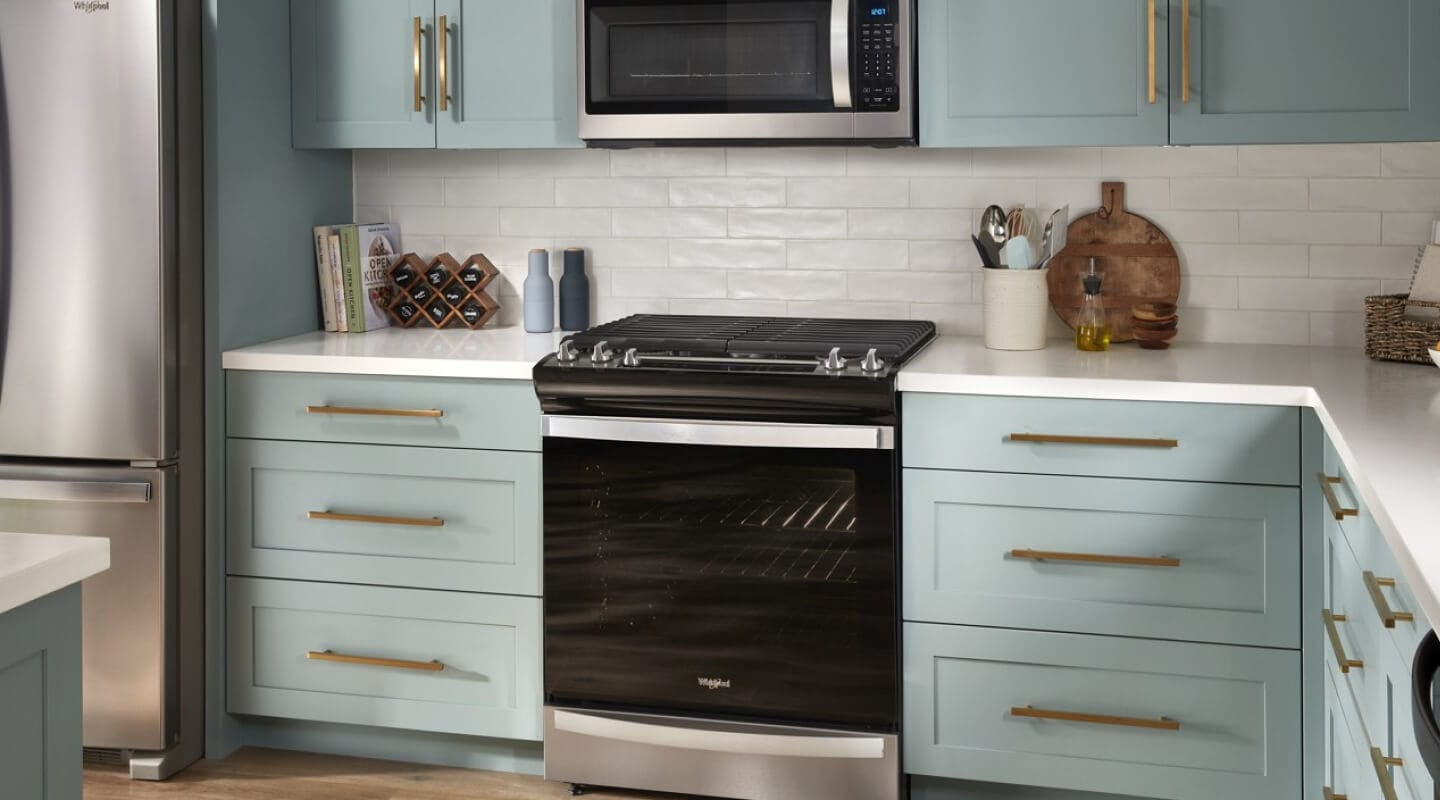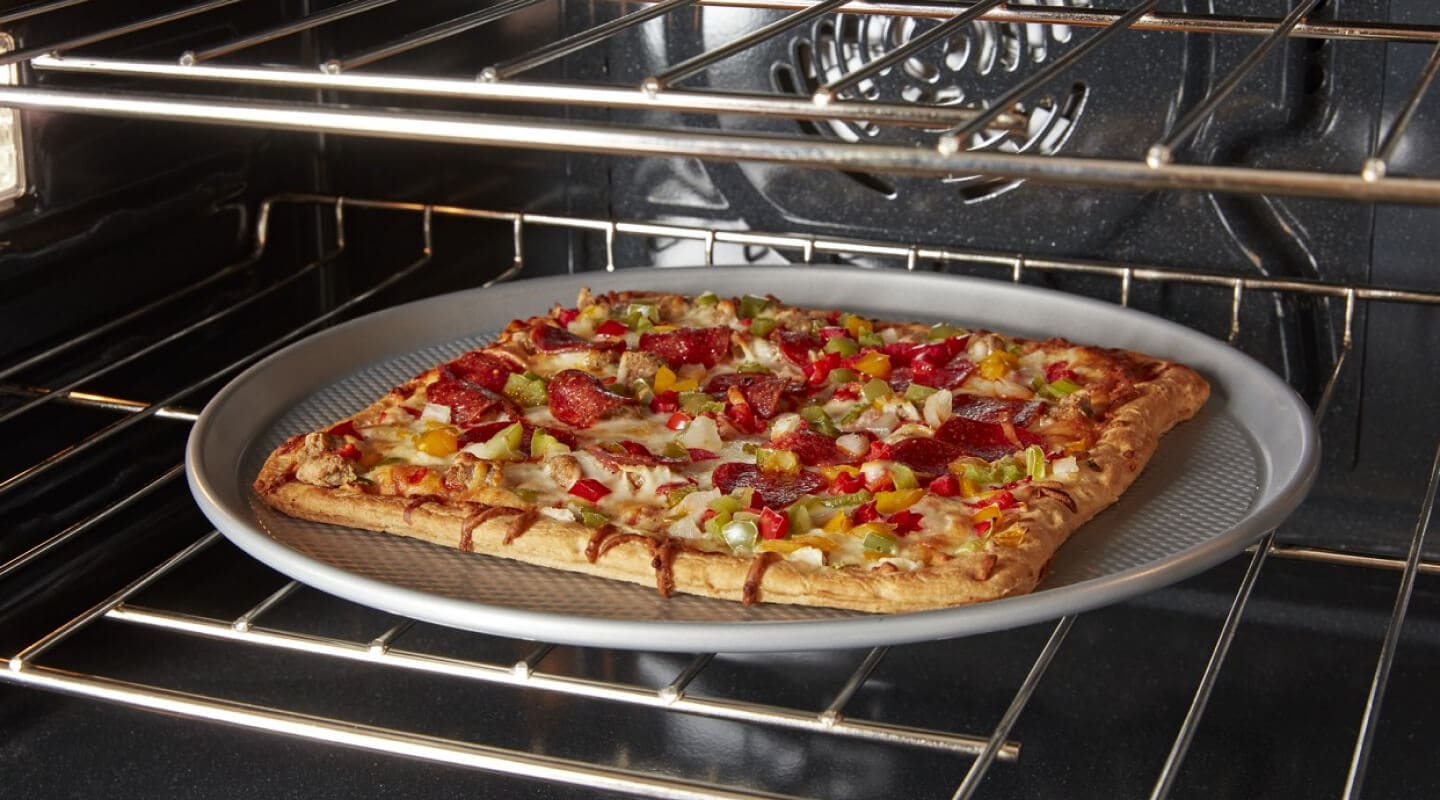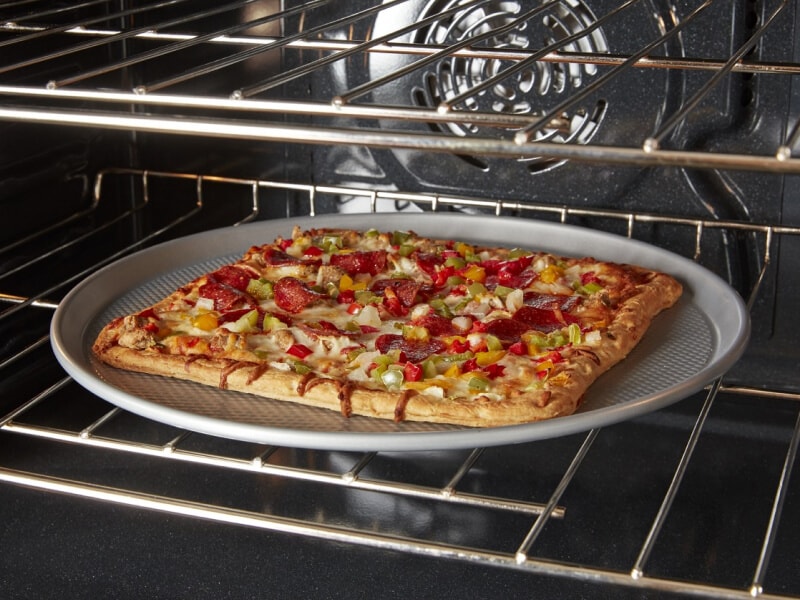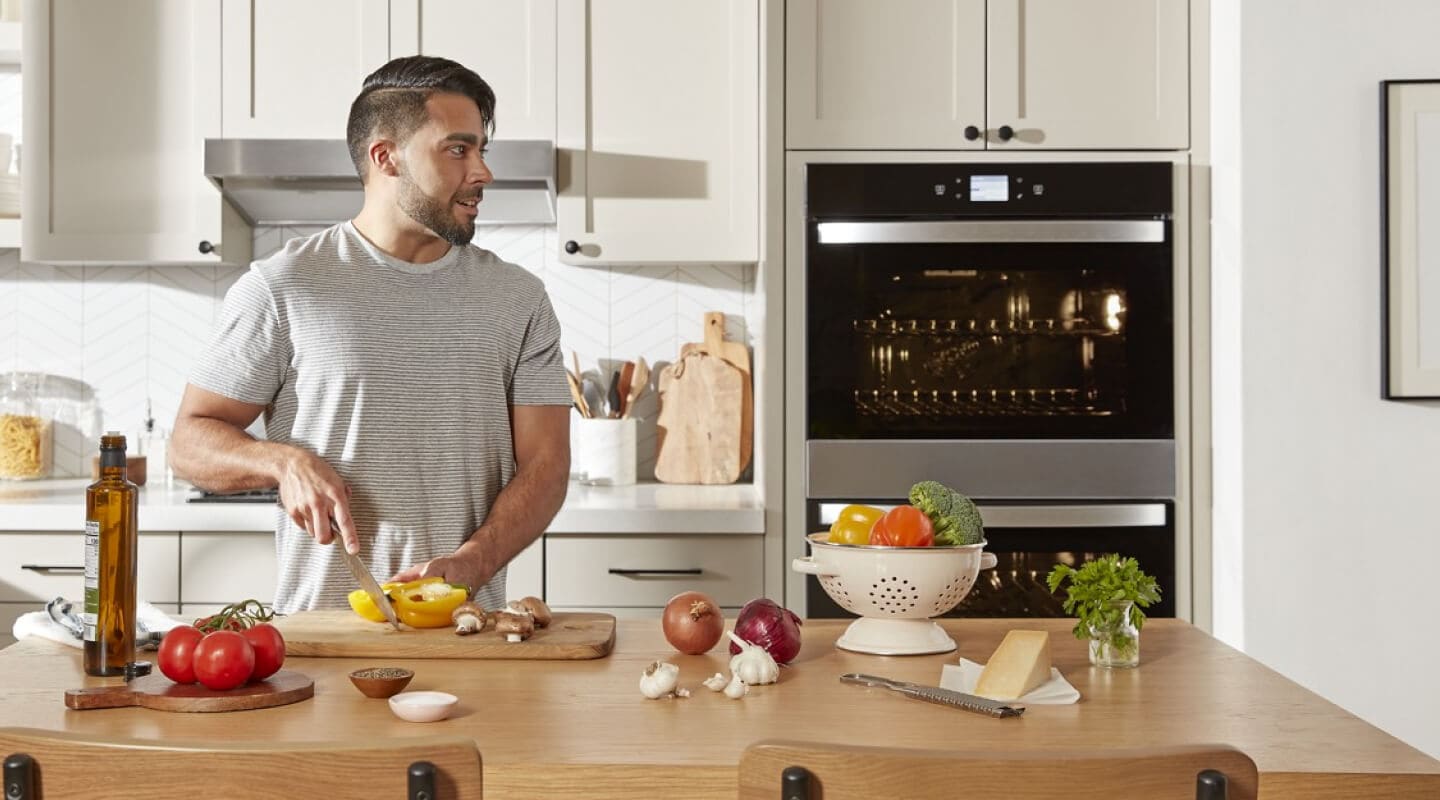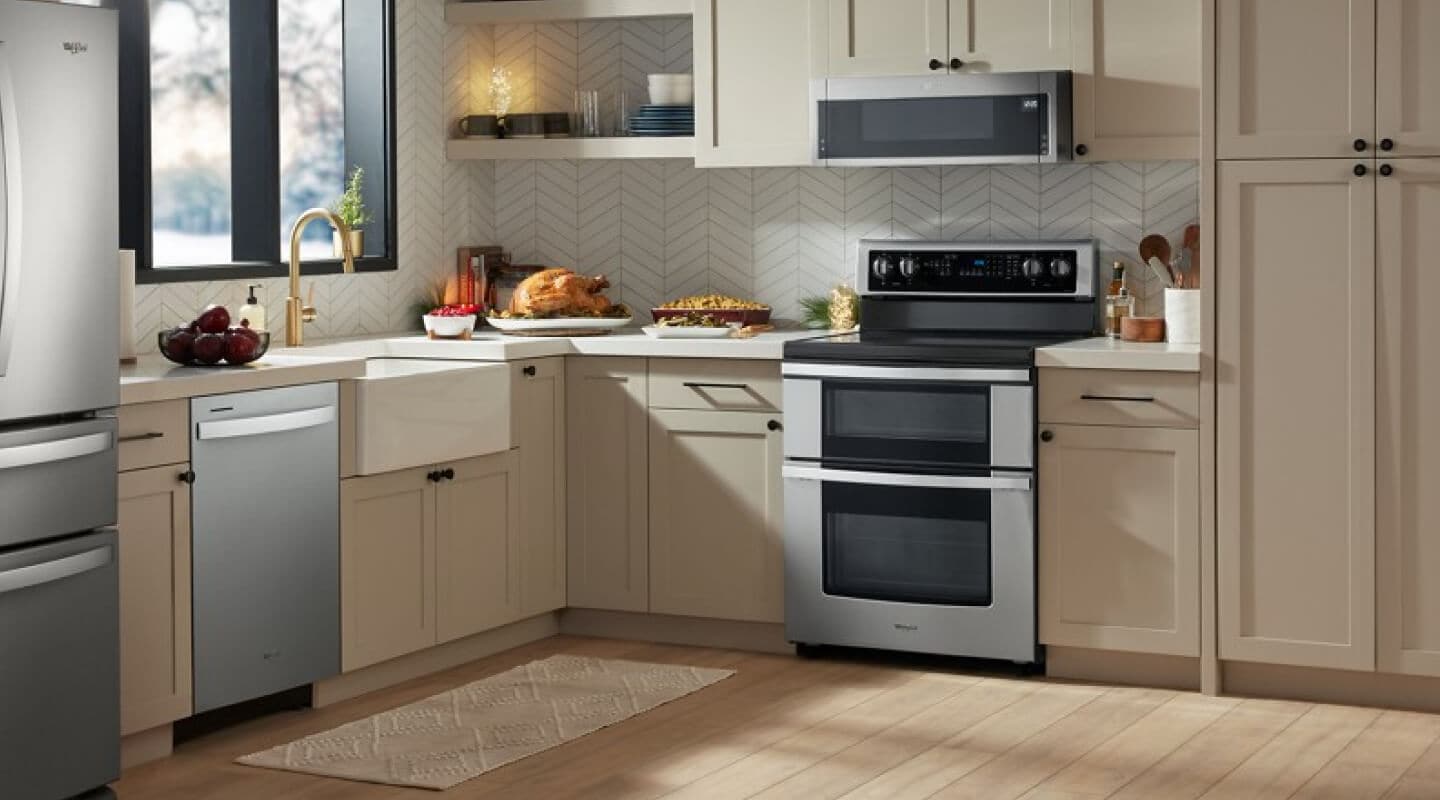
Convection vs. conventional ovens: what’s the difference?
Conventional ovens feature heating elements on the top and bottom of the oven cavity. Convection ovens have these elements in addition to a fan that helps circulate hot air throughout the oven cavity. This can help dishes placed on different racks bake at a similar rate. Some models also integrate a third heating element at the back of the cavity.
Although convection and conventional ovens look similar on the outside, it’s easy to see the difference between the two when you look inside. Use this guide to learn more about convection and conventional ovens to find the right one for your family’s needs.
What is a convection oven?
Convection ovens use a third heating element, plus a fan and exhaust system to help circulate hot air around the oven cavity. This can result in more even results with multi-rack cooking.
While cooking with a convection oven, be mindful that recipe times and temperatures may need to be adjusted. Select Whirlpool® Convection Ovens and Ranges are equipped with a Convection Conversion feature that does the math for you and automatically adjusts the cooking time and temperature for your next meal.
Additionally, calibrating your oven can help you achieve your desired results.
Learn more about oven settings like convection and how to use them.
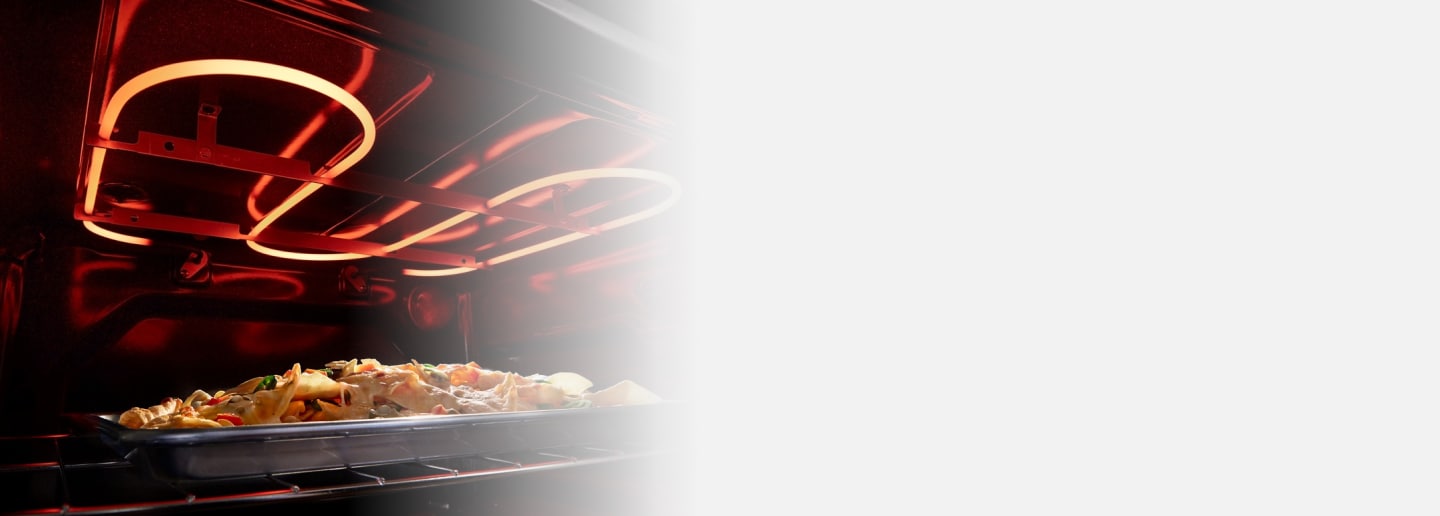
No Preheat Mode
Make the most of your time in the kitchen
Take preheating off your plate with No Preheat Mode—simply place your food in the oven and start baking
What are the benefits of a convection oven vs. a conventional oven?
Depending on your family’s needs, both convection and conventional ovens can provide benefits that help keep dinner prep running smoothly and allow you to spend more time enjoying meals, rather than making them. Learn more about the advantages of a convection oven below:
Ideal for multi-rack cooking, which may eliminate the need to rotate dishes
Promotes browning, crisping and roasting
Intense heat may help cook food faster, depending on the recipe
Quick preheating
Run long baking cycles without drying out foods
The additional fan helps promote even heating throughout the oven
Choose from a wide range of familiar, conventional cooking modes
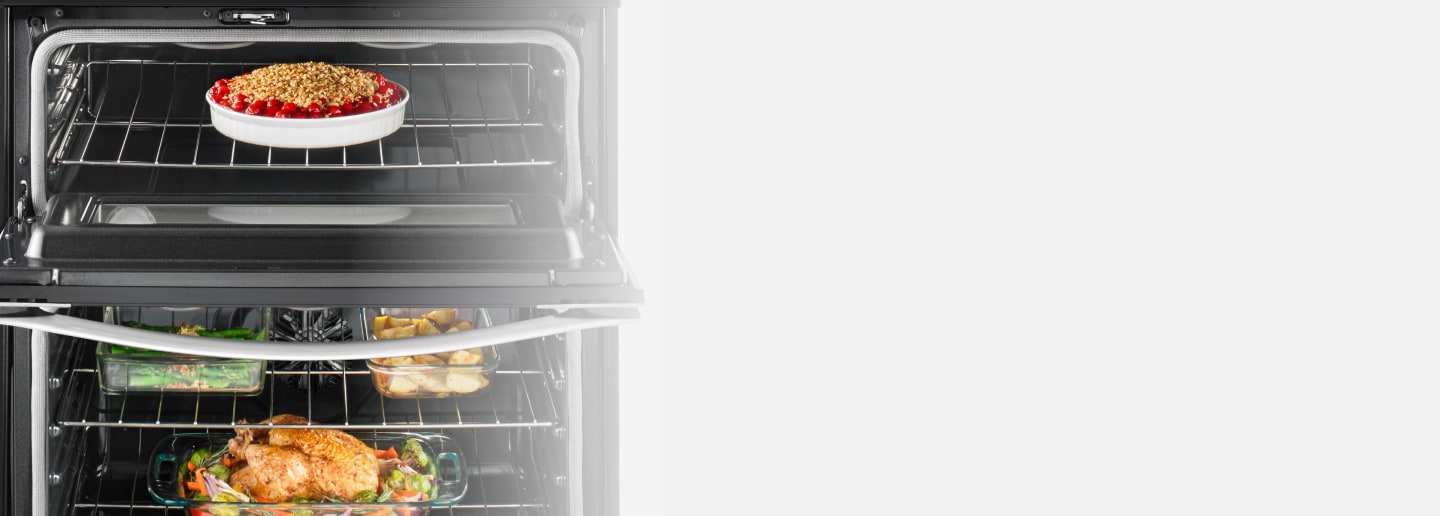
True Convection with Third Heating Element
Get dinner on the table quickly
True convection cooking helps you cook foods faster by using a third element plus a fan to distribute hot air evenly over, under and around food
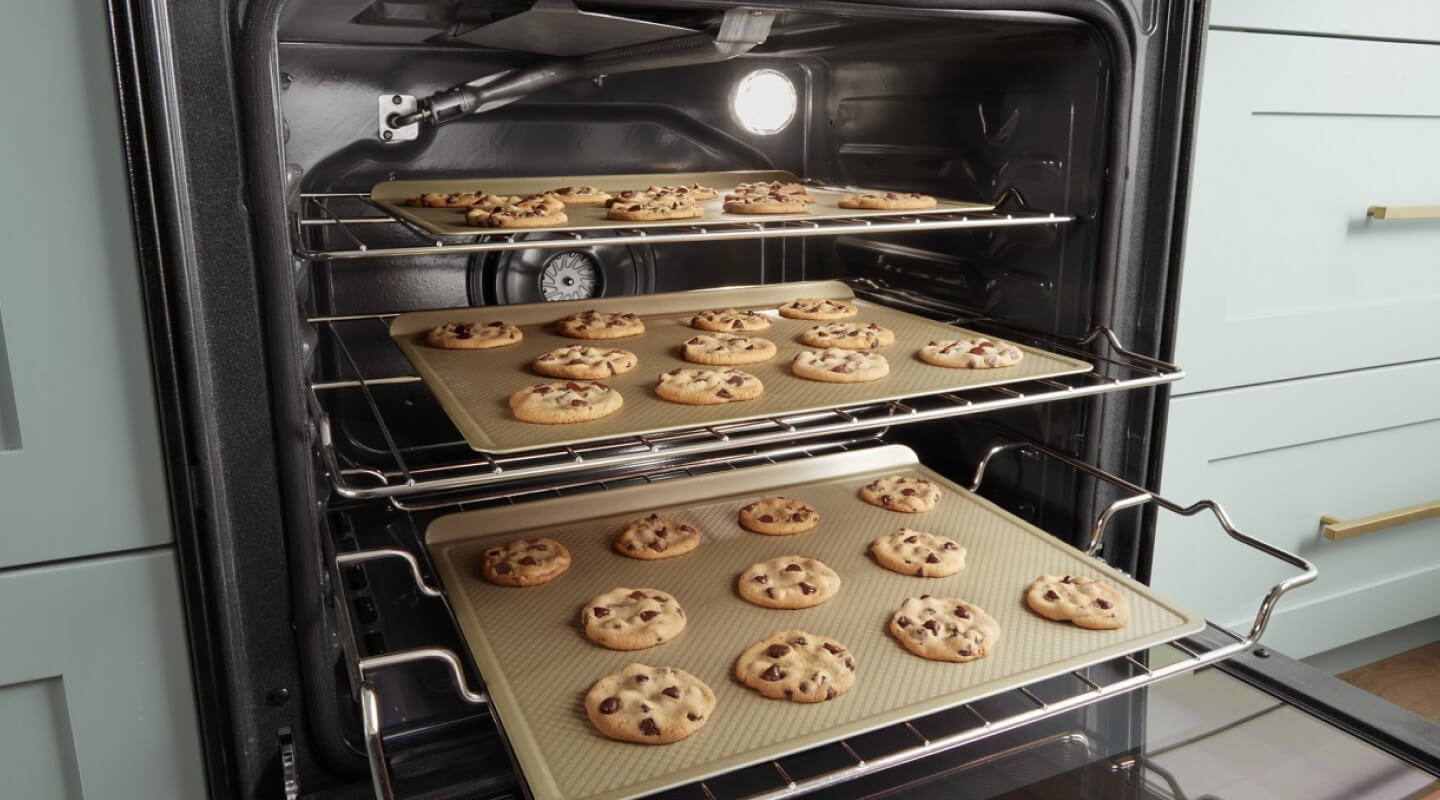
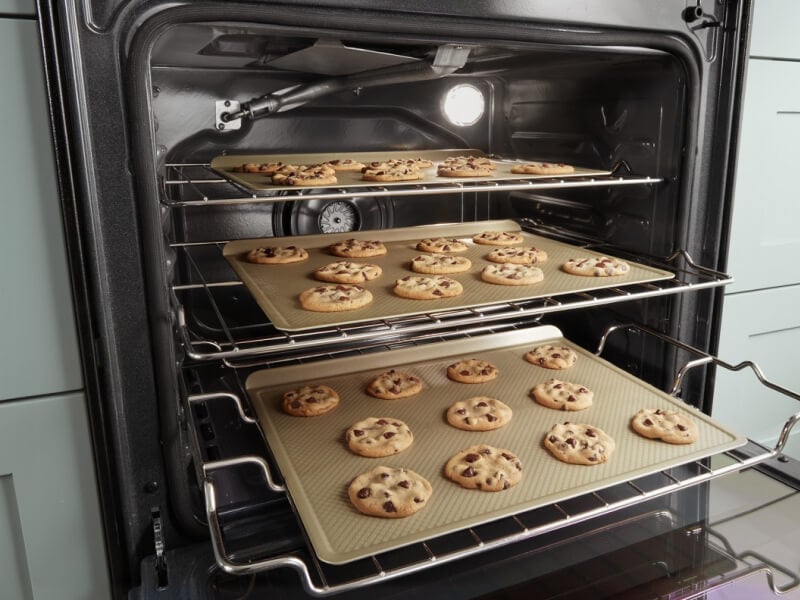
When to use convection baking
Use the convection setting on your convection oven for most cooking, roasting and baking needs, including meats, vegetables, casseroles, cookies and pies. Convection ovens may also include features and settings for air frying, though not for deep frying.
With convection roasting, meats like chicken and turkey can get a delicious crispy outer layer, while staying juicy on the inside. Cookies and brownies may also bake better without the need to rotate or change racks throughout the cooking cycle. For optimal results, leverage multi-rack cooking by centering your baking dishes on multiple racks within the oven cavity.
Learn more about the differences between air frying and convection ovens.
What is the temperature difference between convection and regular ovens?
When using convection ovens, most foods can be cooked about 25° lower or for a shorter length of time. It’s important to consider that most recipes are tailored for conventional ovens, with specific cook times and temperatures that may not translate to convection models. This may require you to adjust your recipes to ensure optimal results when using a convection oven.
Select Whirlpool® Ranges and Ovens, like this Whirlpool® Electric Double Range Oven, are equipped with Convection Conversion. This feature will do the math for you when you need to convert traditional recipes for convection cooking, automatically adjusting cooking times and temperatures.
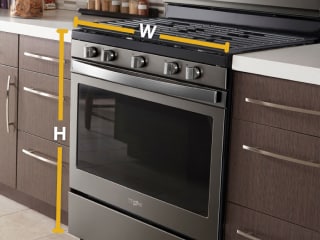
Measure for your next stove
Shop Whirlpool® Convection Ovens and Ranges
Whirlpool® Convection Ovens and Convection Ranges are equipped with a variety of features to help you simplify dinnertime, like True Convection Cooking that helps you cook foods faster by using a third element, or Frozen Bake™ Technology that lets you skip preheating to cook frozen favorites in fewer steps. If you are considering a convection oven, measure the cutout dimensions for wall ovens or stoves to ensure a proper fit in your kitchen. Make sure to consult the manufacturer’s recommended cut-out dimensions before you buy.
What’s a conventional oven?
Conventional ovens, commonly found in most kitchens, come equipped with two heating elements inside the oven cavity. The bottom element is the primary heat source, whereas the upper element delivers intense, top-down heat.
The bottom element is ideal for roasting large cuts of meat, like turkey or whole chickens, while the top element works best for broiling and browning casseroles. Conventional ovens do not have a fan to circulate hot air, like convection ovens, so your oven rack placement is key for quality results, and dishes may need to be rotated.
What are the benefits of a standard oven vs. a convection oven?
Conventional ovens are standard models found in many kitchens and are likely what most people are familiar with using for baking, roasting and broiling. Convection ovens can cook some dishes faster and help create crispy, caramelized and browned finishes through rapid air circulation. Many convection ovens function as traditional ovens until the convection setting is activated, providing the best of both. Conventional ovens offer a variety of benefits, such as:
More familiar functionality
Most recipes are written according to standard oven temperatures
Achieve different results based on oven rack placement
When to use conventional oven baking
Convection ovens provide intense heat that may help food cook faster, which can help achieve a flaky crust on pies or a crispy outer edge on chocolate chip cookies. However, it may not be ideal for all types of baked goods.
Standard conventional ovens may be preferred when baking items that benefit from a still environment, such as delicate cakes and pastries with liquid batters. However, If you have a convection oven, simply deselect the convection feature when needed. Some desserts that can be made in conventional gas or electric ovens include:
Cakes
Breads
Custards
Pastries
Explore Whirlpool® Conventional Ovens and Ranges
Whirlpool brand offers a wide selection of conventional ovens and ranges with features on select modelsdesigned to help you keep dinnertime moving, like EZ-2-Lift™ Hinged Grates for quick access to spills on the cooktop. Find the model that helps you have meal time on your schedule.


Helping kids stay in school
Learn how Whirlpool helps end the dropout cycle by giving kids access to clean clothes through the Care Counts™ Laundry Program
Was this article helpful? Pass it on
Discover more from Whirlpool brand
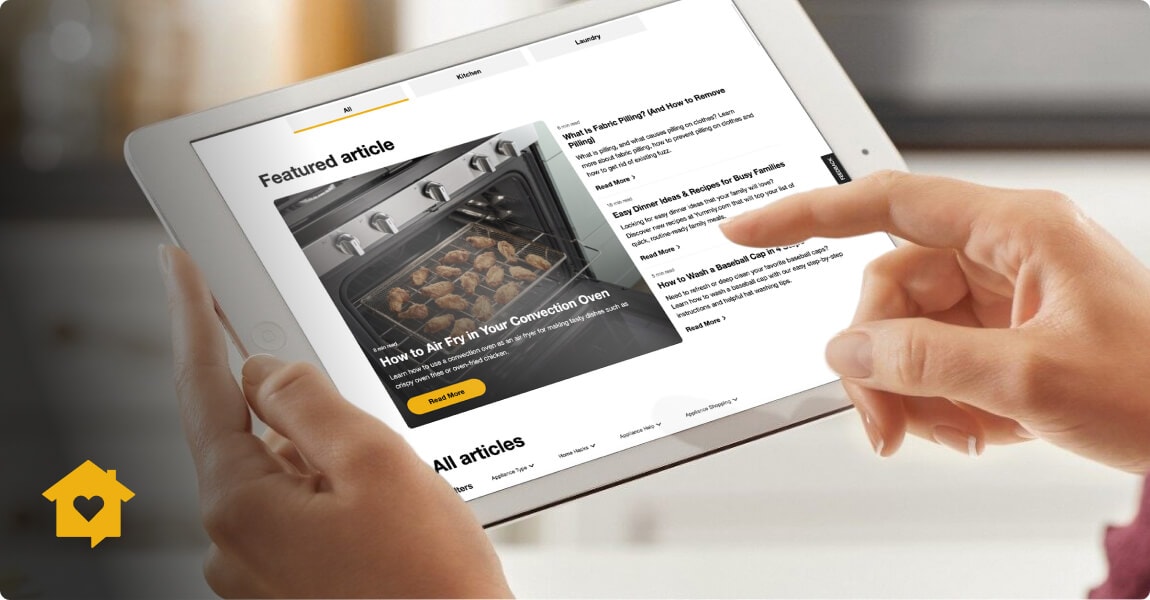

home heartbeat
Ready for more tips, home hacks and appliance guides?

